July 5, 2025

The article highlights the critical importance of the spelling differences between 'behaviour' and 'behavior' within the realm of Applied Behavior Analysis (ABA) therapy. These variations are not mere trivialities; they reflect regional language preferences that can significantly impact communication and treatment outcomes.
Misunderstandings stemming from inconsistent terminology can lead to complications in documentation and client interactions. Ultimately, this inconsistency can influence the quality of care provided in multicultural therapy settings, raising essential questions about the effectiveness of treatment in diverse environments.
The nuances of language can have profound implications in specialized fields, particularly in Applied Behavior Analysis (ABA) therapy, where the distinction between 'behavior' and 'behaviour' transcends mere spelling. This article explores the significance of these terms, revealing how regional preferences can influence communication, documentation, and treatment strategies within diverse therapeutic environments. As practitioners navigate the complexities of multicultural interactions, one must consider: how can an understanding of these linguistic differences enhance the effectiveness of ABA therapy and improve outcomes for clients?
The terms 'behaviour' and 'behavior' denote the same idea but vary in spelling according to regional language preferences. 'Behaviour vs behavior' highlights that 'behavior' is the American English spelling, while 'behaviour' is preferred in British English. This distinction is essential for professionals operating in international environments or with varied populations, as it can greatly influence documentation and interactions in ABA therapy settings.
Inconsistencies in language can lead to misunderstandings in treatment plans and progress reports, potentially affecting the quality of care provided. Notably, studies demonstrate that 90% of individuals exhibit significant improvement when caregivers are actively involved in ABA therapy. This underscores the importance of in achieving favorable outcomes.
Furthermore, the impact of language differences extends to statistical reporting in ABA therapy, where consistent terminology is vital for data integrity. As the field continues to grow globally, understanding these nuances becomes essential for fostering effective collaboration and ensuring that all stakeholders are aligned in their therapeutic approaches.
Empathy-driven insights remind us that actions are a form of communication, emphasizing the need for clarity in documentation to support the emotional landscape of families and caregivers.
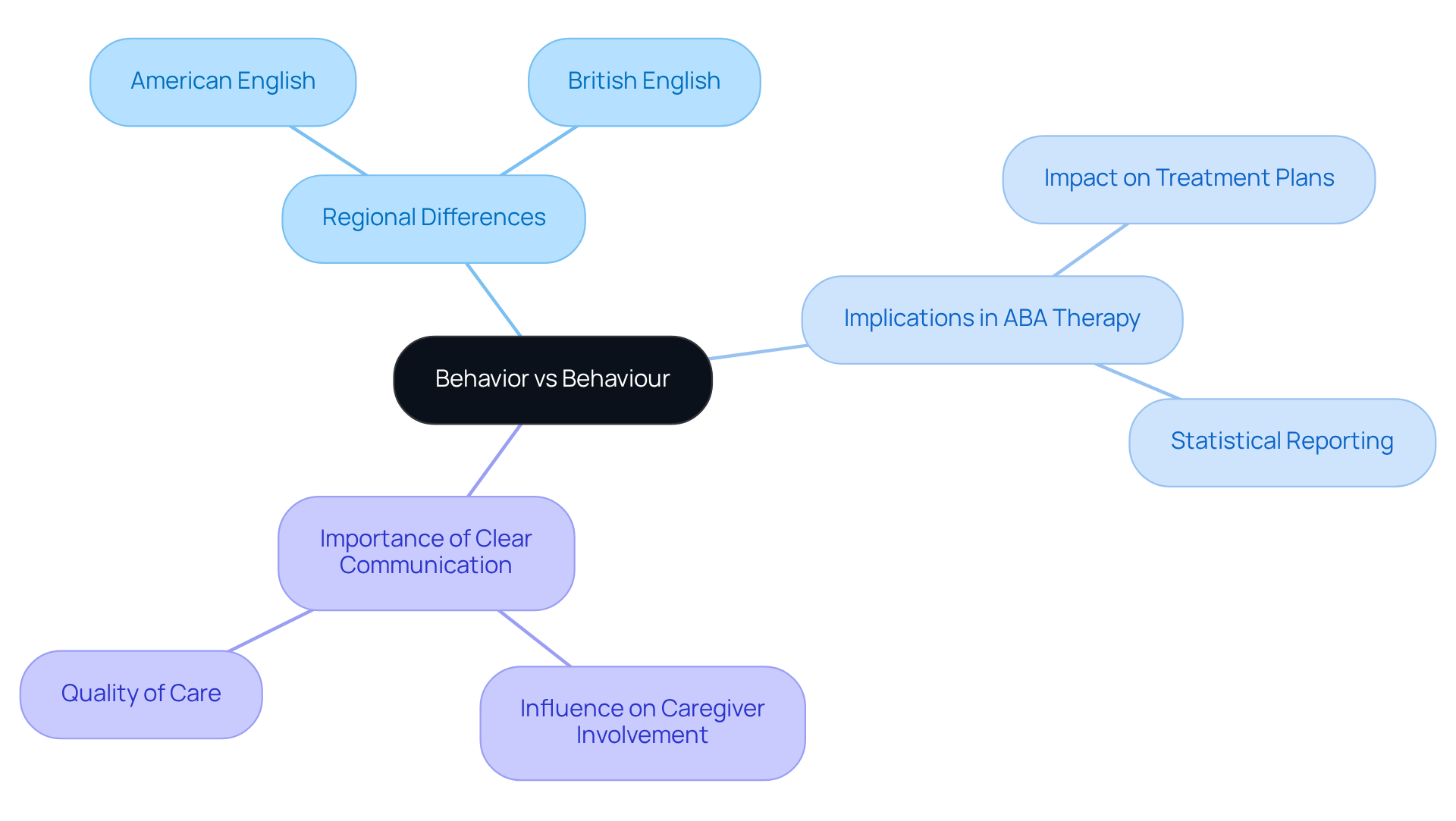
The distinction between 'behaviour' and 'behavior' highlights broader cultural contexts, as 'behavior' is the standard in American English while 'behaviour' is preferred in British English. This seemingly simple difference can significantly influence how analysts communicate with clients and colleagues, particularly in multicultural settings. Effective interaction is essential in Applied Behavior Analysis (ABA) therapy, where understanding and addressing diverse cultural perspectives can enhance therapeutic outcomes.
Statistics indicate that approximately 70% of analysts encounter communication challenges in multicultural environments. This highlights the significance of cultural competence in practice. Experts emphasize that awareness of these linguistic differences is crucial for fostering understanding and building rapport with clients from various backgrounds. Ultimately, this awareness leads to more and support.
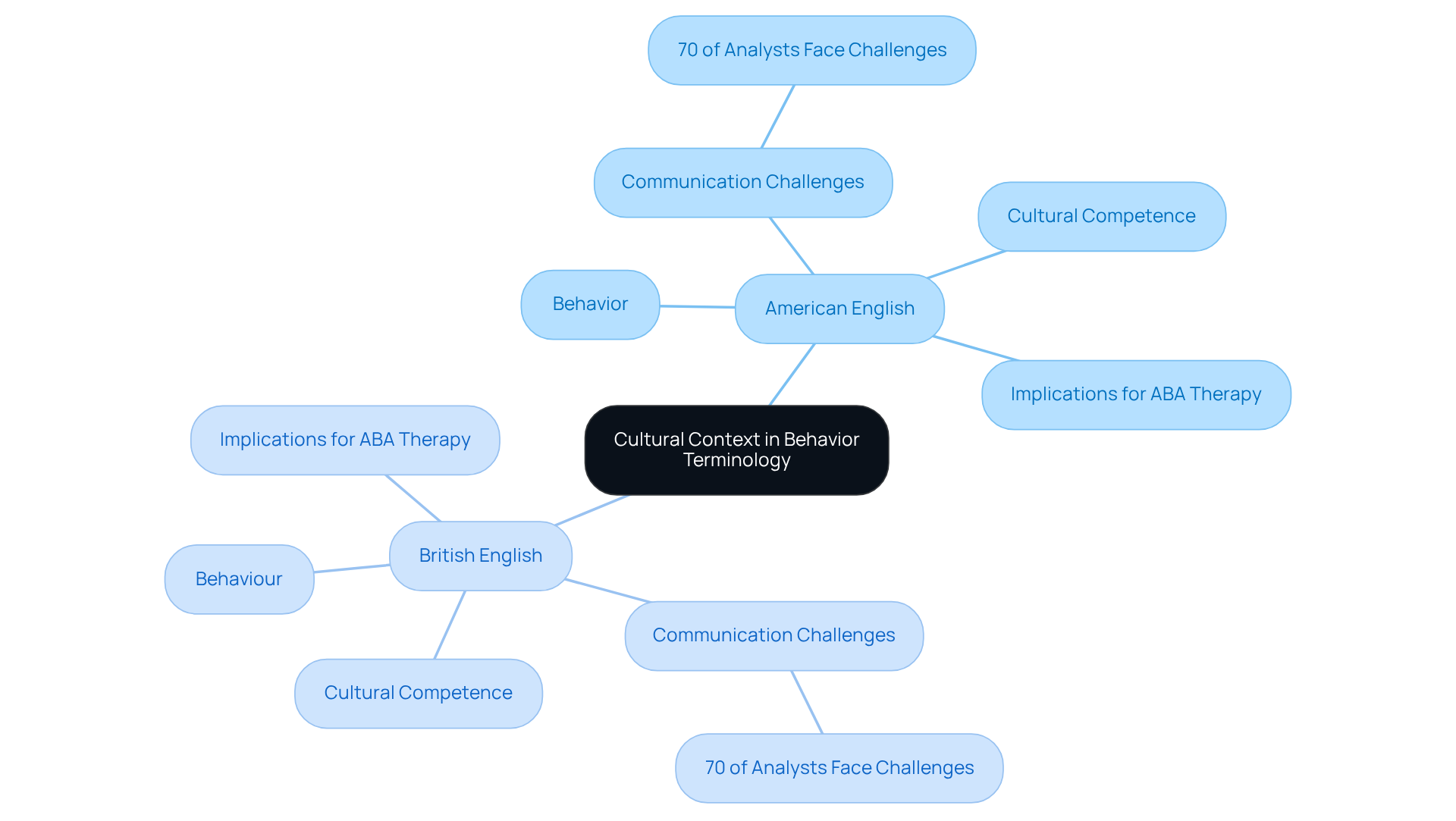
The distinction between 'conduct' and 'behaviour vs behavior' significantly shapes psychological perspectives within conduct analysis. With the demand for Board Certified Behavior Analysts (BCBAs) projected to increase by 25% by 2026, understanding the differences between behaviour vs behavior is crucial for enhancing the effectiveness of Applied Behavior Analysis (ABA) practices.
American practitioners generally emphasize visible actions, concentrating on measurable activities that can be directly evaluated. In contrast, British analysts often place greater emphasis on contextual factors, considering the environment and circumstances surrounding actions. This divergence in focus can lead to varied intervention strategies, as practitioners tailor their approaches based on the behaviour vs behavior terminology and frameworks prevalent in their respective regions.
For instance, while American analysts might apply reinforcement strategies to alter specific actions, British counterparts may examine the wider context affecting those actions, resulting in more comprehensive interventions. Expert insights indicate that a balanced approach, which recognizes both observable actions and contextual factors, can lead to a more comprehensive and effective behaviour vs behavior analysis.
As B.F. Skinner, the Father of Applied Behavior Analysis, noted, 'It is a mistake to suppose that the whole issue is how to free man. The issue is to improve the way in which he is controlled.' This emphasizes the significance of comprehending both conduct in the context of behaviour vs behavior and the environment in developing effective interventions.
Furthermore, incorporating insights on family support for individuals with autism can provide a broader context for understanding the implications of behaviour vs behavior analysis in practice. This ensures that interventions are not only effective but also supportive of the individuals and families involved.
As the field evolves, recognizing these distinctions becomes even more relevant, prompting practitioners to adapt methodologies to better suit the needs of those receiving therapy. How can you ensure that your hiring practices align with ? Consider how platforms like Hire ABA can assist in addressing these challenges effectively.
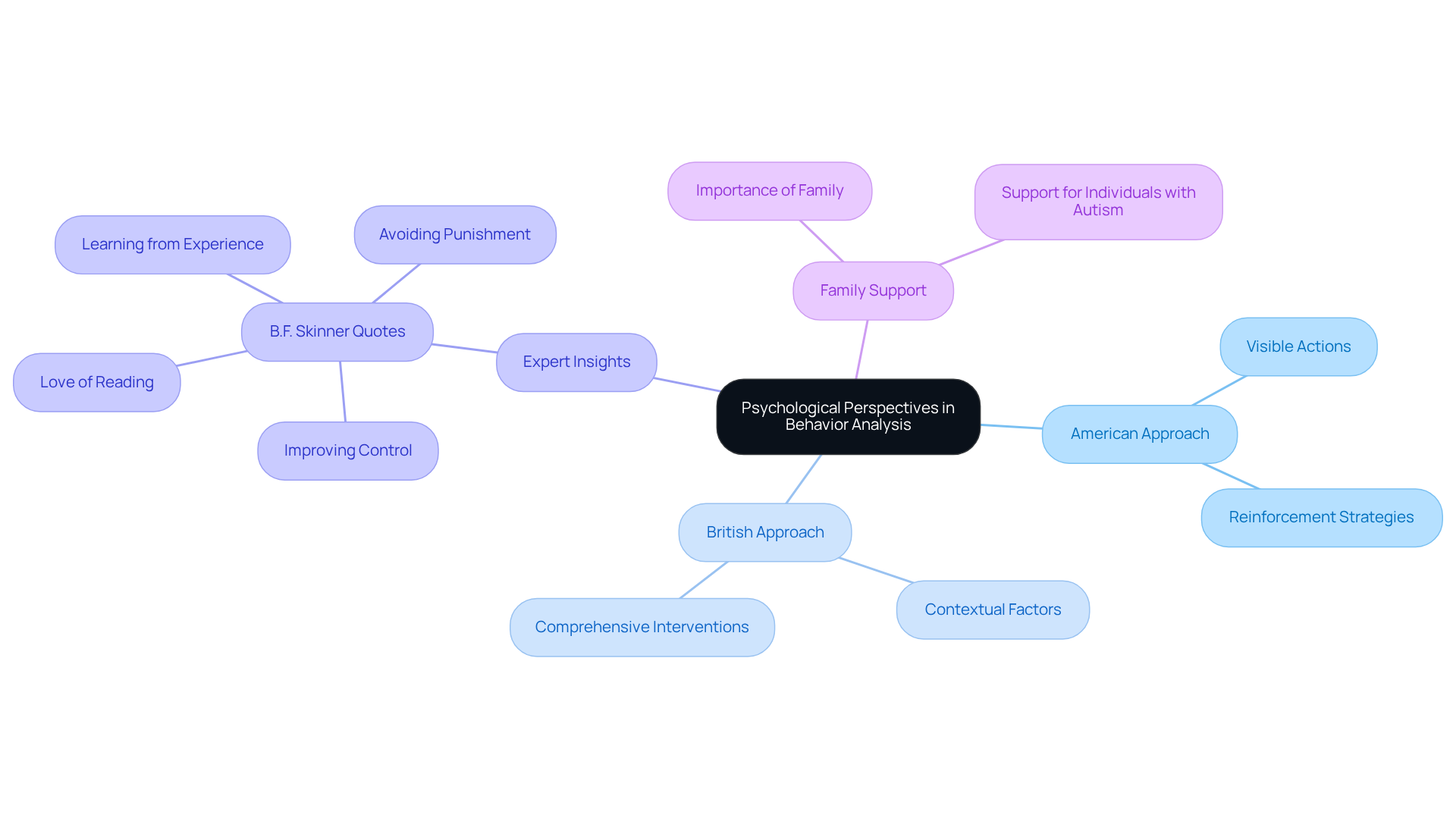
In ABA therapy, the distinction between 'behaviour' and 'behavior' goes beyond mere spelling; it significantly influences documentation, treatment plans, and client interactions. For example, 'behavior' may resonate more effectively with American clients and resources, whereas 'behaviour' is often favored in British contexts, illustrating the concept of behaviour vs behavior. This awareness is essential, as research indicates that 90% of individuals achieve when treatment plans are tailored to their specific communication preferences. Practitioners must navigate these nuances to enhance clarity and effectiveness in their interventions.
As Dr. Temple Grandin stated, 'Different, not less,' highlighting the necessity of recognizing individual differences. Furthermore, insights from Board Certified Behavior Analysts (BCBAs) stress the importance of employing language that aligns with clients' backgrounds, reinforcing that '[data collection enables therapists to objectively track progress over time](https://allstaraba.org/statistics-in-aba-therapy).'
By acknowledging the differences in spelling, specifically behaviour vs behavior, therapists can develop more effective and relatable treatment plans that foster better understanding and engagement with their clients.
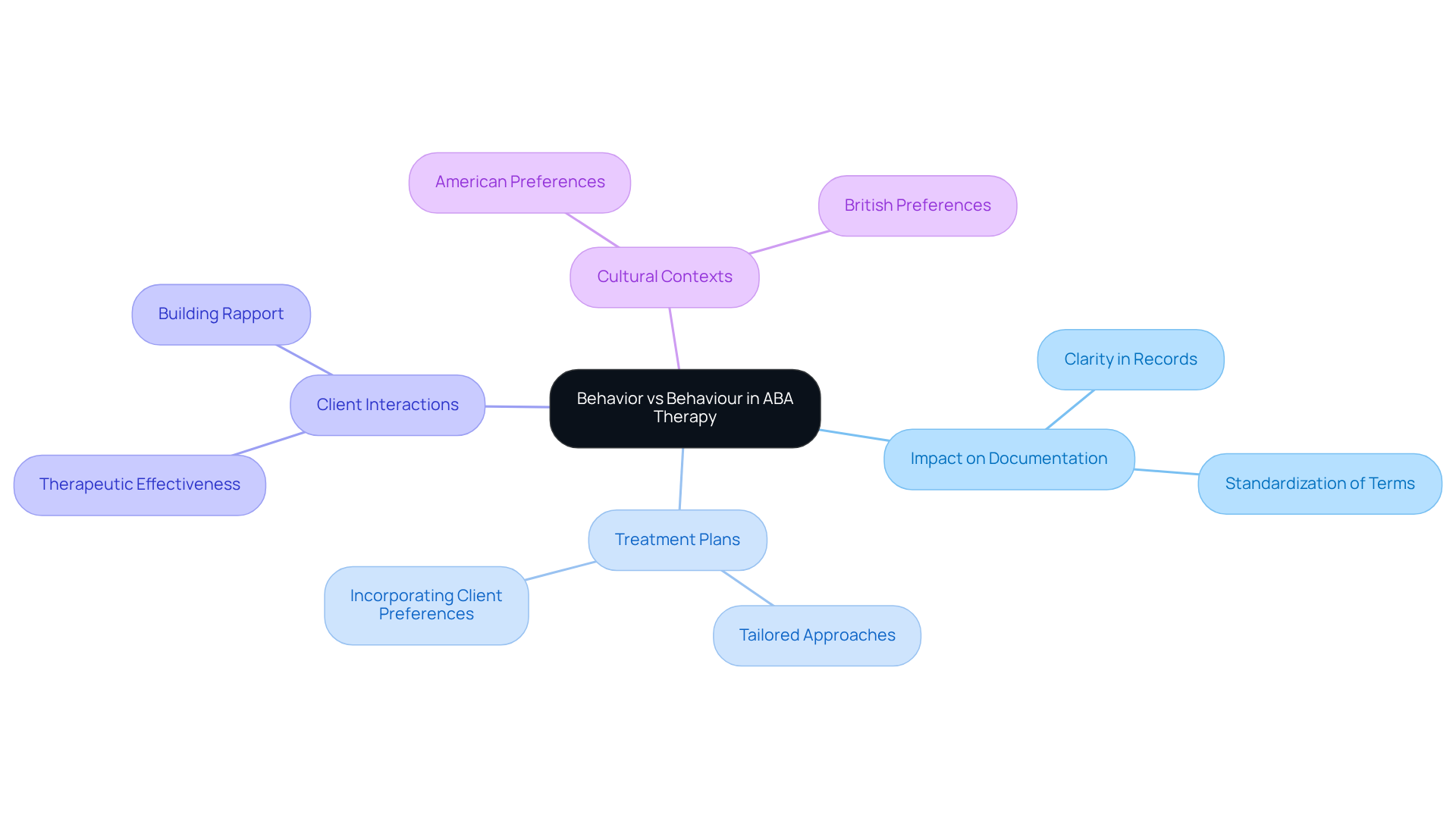
For Board Certified Behavior Analysts (BCBAs), accurate language is essential for upholding professional standards and ensuring adherence to regulatory requirements. Miscommunication arising from spelling variations can lead to significant misunderstandings in treatment plans and client interactions. Consider the difference between 'behaviour' and 'behavior'; while it may seem trivial, such discrepancies in behaviour vs behavior can create confusion in documentation and compliance assessments. BCBAs must adeptly navigate these nuances to deliver effective and ethical services.
Furthermore, the influence of vocabulary extends to regulatory compliance; inconsistencies in language can pose challenges in fulfilling legal and ethical obligations. By maintaining consistency in terminology, BCBAs not only enhance interactions with clients and colleagues but also mitigate potential compliance issues that may stem from varying interpretations of terms. This meticulous attention to detail is crucial in within the therapeutic process.
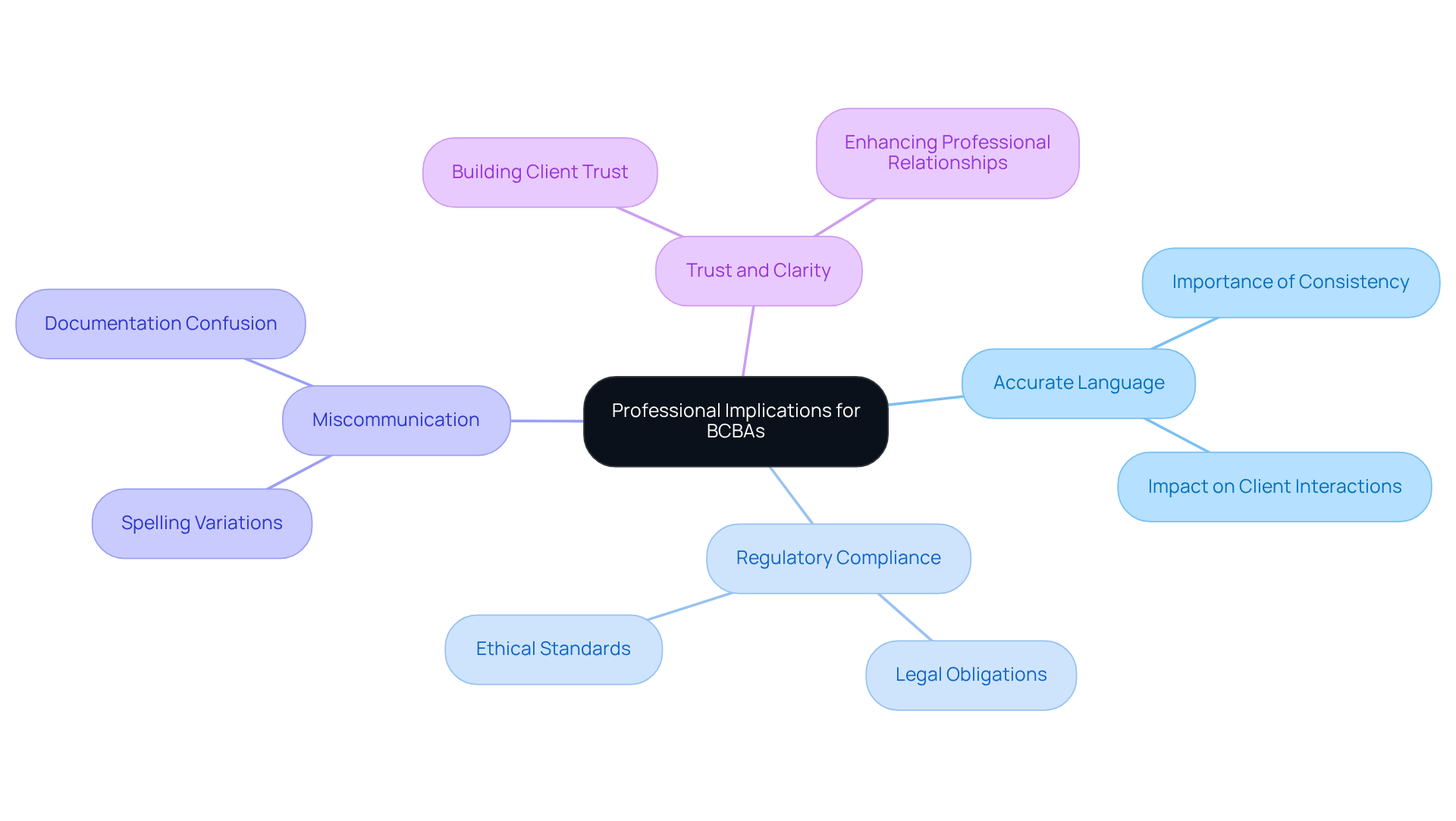
In behavior analysis, clarity in communication is essential for effective treatment. The distinction between 'behaviour' and 'behavior' may appear trivial, yet it can significantly shape the understanding of treatment goals and strategies. Research shows that when language is precisely defined, stakeholders—including clients, families, and colleagues—align more effectively, enhancing the success of interventions.
For example, employing specific terms can clarify the objectives of Functional Communication Training (FCT), ensuring all parties grasp the intended outcomes. Furthermore, effective interaction strategies, such as utilizing visual aids or maintaining consistent terminology across sessions, can bridge gaps in understanding.
Ultimately, prioritizing clear communication in behaviour vs behavior analysis not only fosters collaboration but also markedly improves the overall .
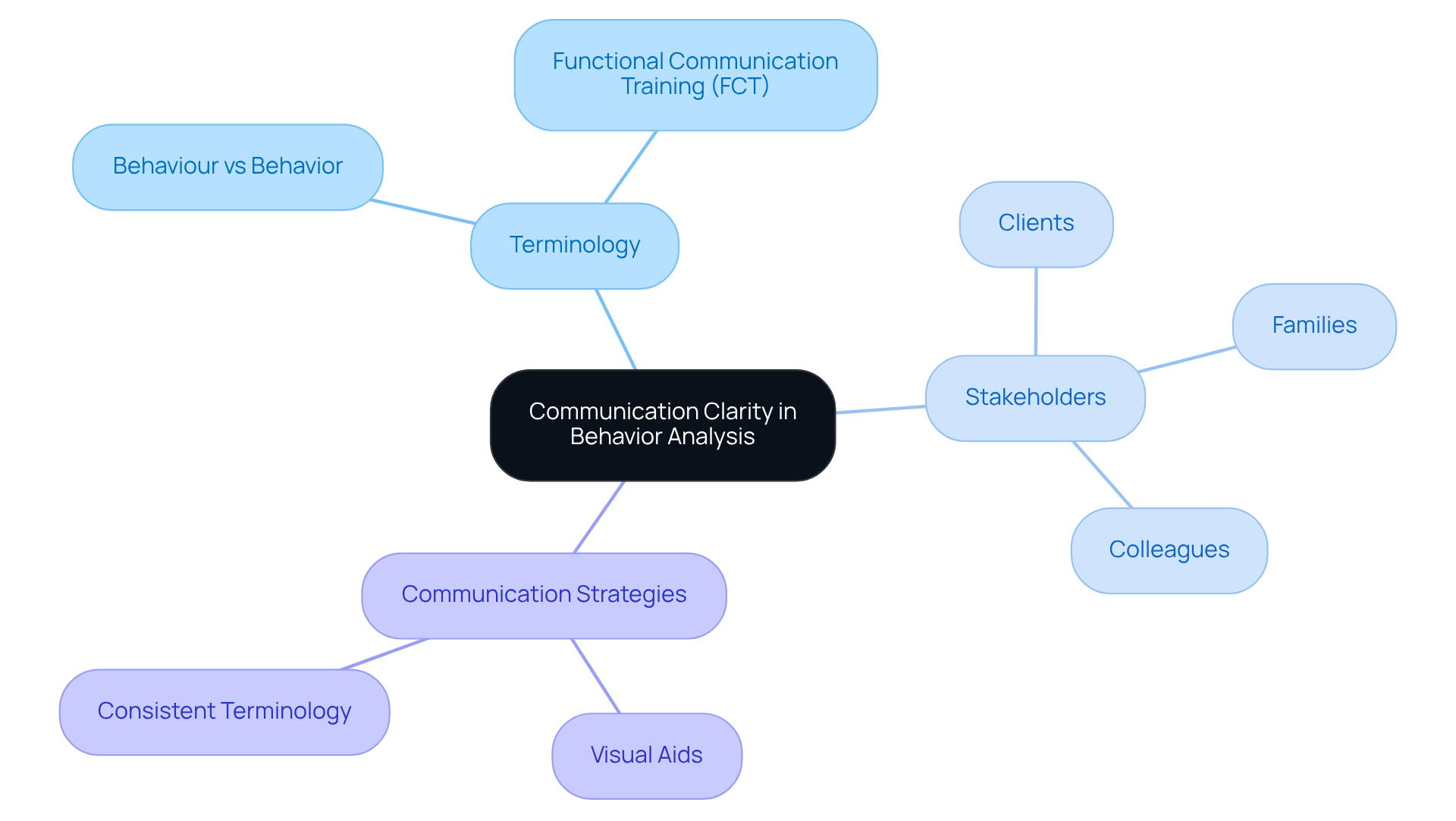
The terms 'behavior' and 'behaviour' have evolved significantly over time, showcasing the differences in linguistic preferences and cultural contexts. Historically, the distinction between 'behaviour vs behavior' has shown that American English favors 'behavior', while British English retains 'behaviour'. This evolution is not merely a matter of preference; it carries substantial implications for behaviour vs behavior analysts. Understanding these distinctions is crucial, as they influence the , practice, and professional interactions within the field. As such, behavior analysts must remain attuned to these shifts to ensure effective communication and application of their expertise.
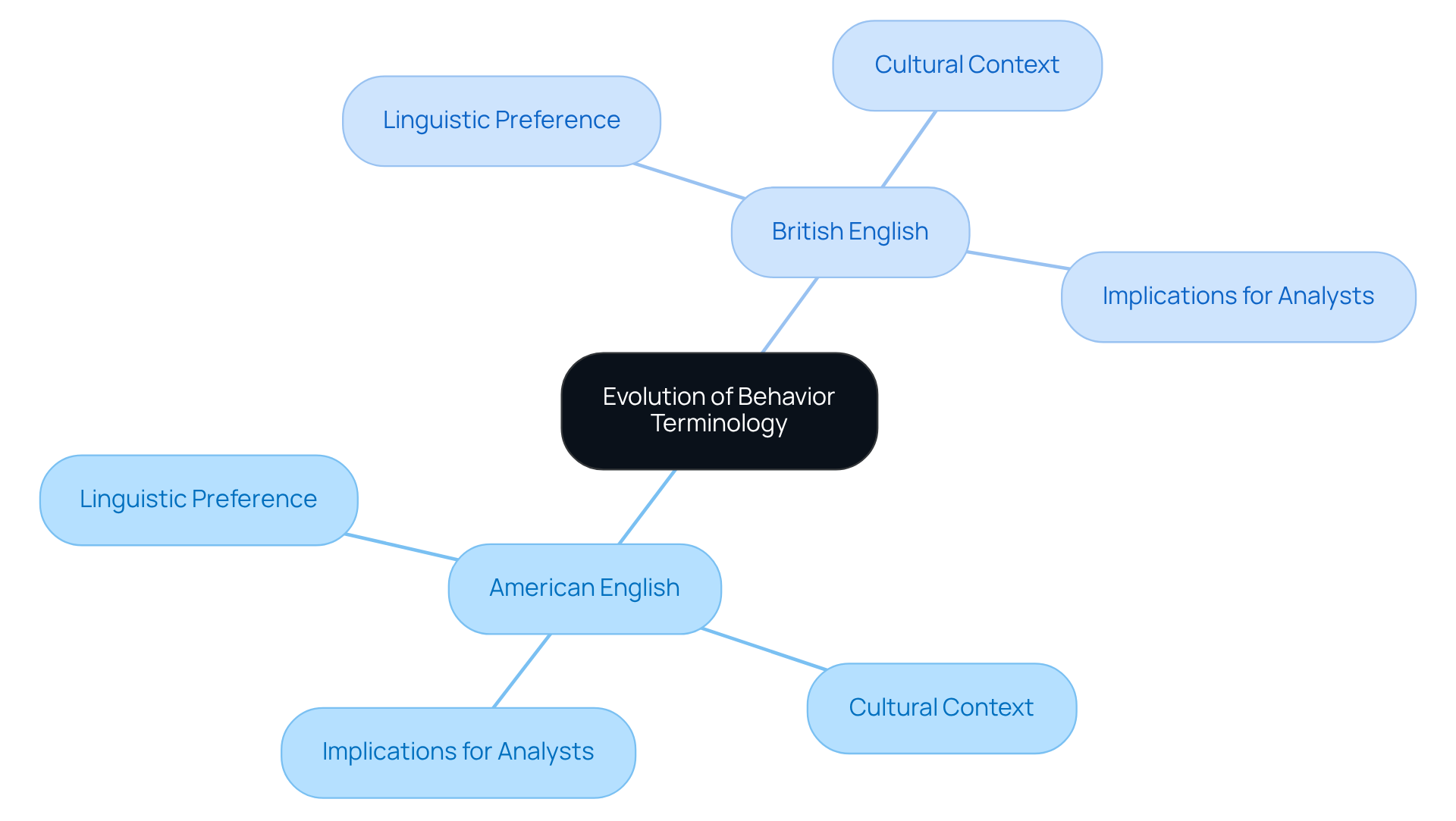
In educational environments, the distinction of 'behaviour vs behavior' plays a vital role in shaping teaching strategies and interactions with students. Educators must recognize these differences to cultivate inclusive learning environments that accommodate diverse linguistic backgrounds.
Research indicates that and understanding, leading to improved educational outcomes. For instance, nearly 90 percent of public schools nationwide reported negative impacts on students’ socioemotional development following the pandemic, underscoring the urgent need for inclusive practices.
Experts such as Wanda Longoria emphasize that students are socially and emotionally lagging, highlighting the critical importance of incorporating inclusive language in ABA therapy. By prioritizing linguistic awareness, educators can create more effective and supportive learning experiences for all students.
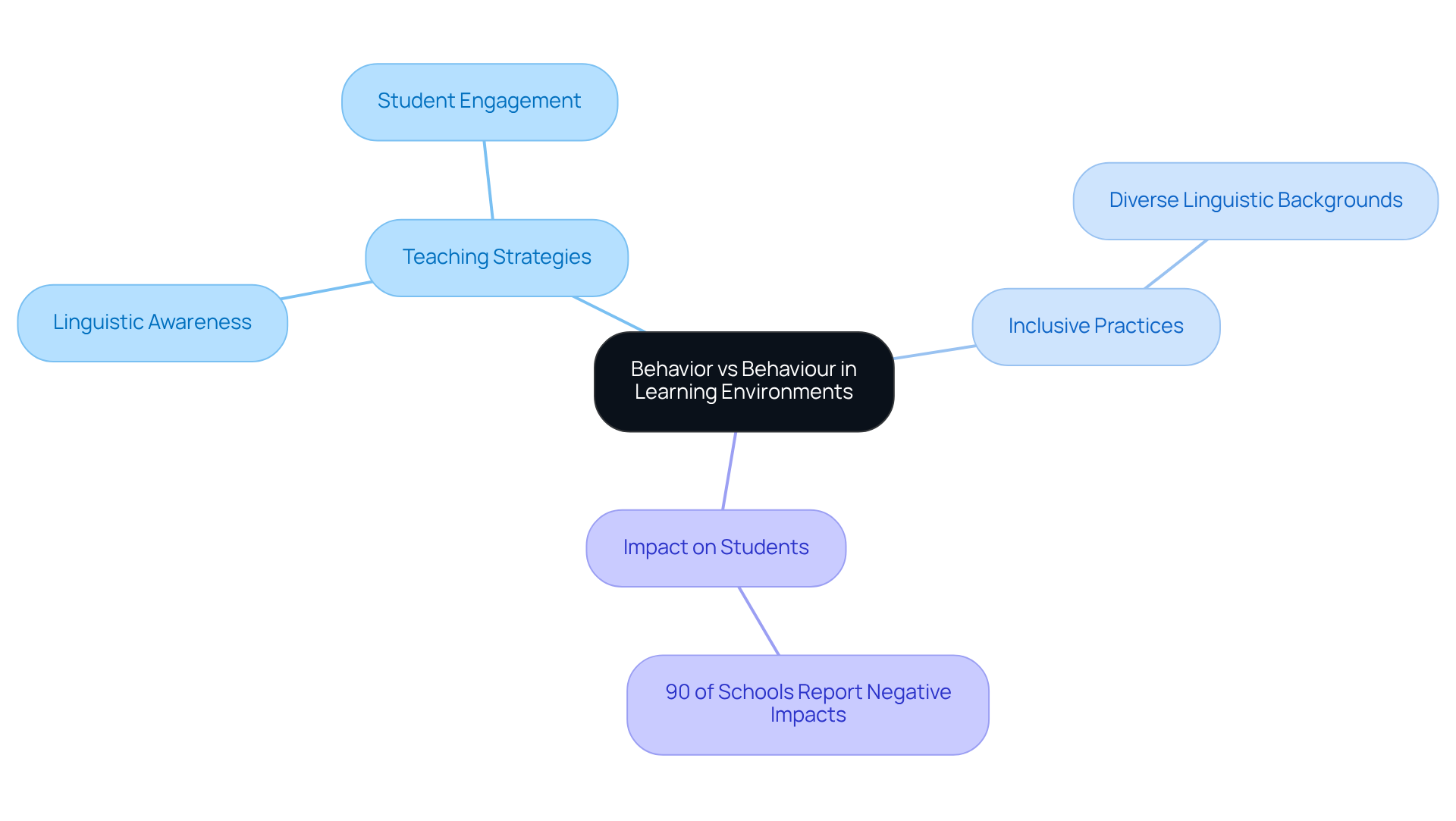
The distinction between 'behaviour' and 'behavior' is a pivotal topic in academic literature, carrying substantial implications for interpreting research findings. Consistency in language is essential for ensuring clarity and precision in contributions to the analysis of actions. This uniformity not only but also fosters collaboration among scholars and practitioners.
Consider this: research employing consistent terminology leads to more reliable comparisons and conclusions, ultimately deepening comprehension in the field. Furthermore, expert insights reveal that variations in language can influence the perceived validity of research, underscoring the necessity for standardized expressions in behaviour vs behavior analysis literature. By prioritizing consistent terminology, researchers can elevate the quality of their work and promote more effective interaction within the academic community.
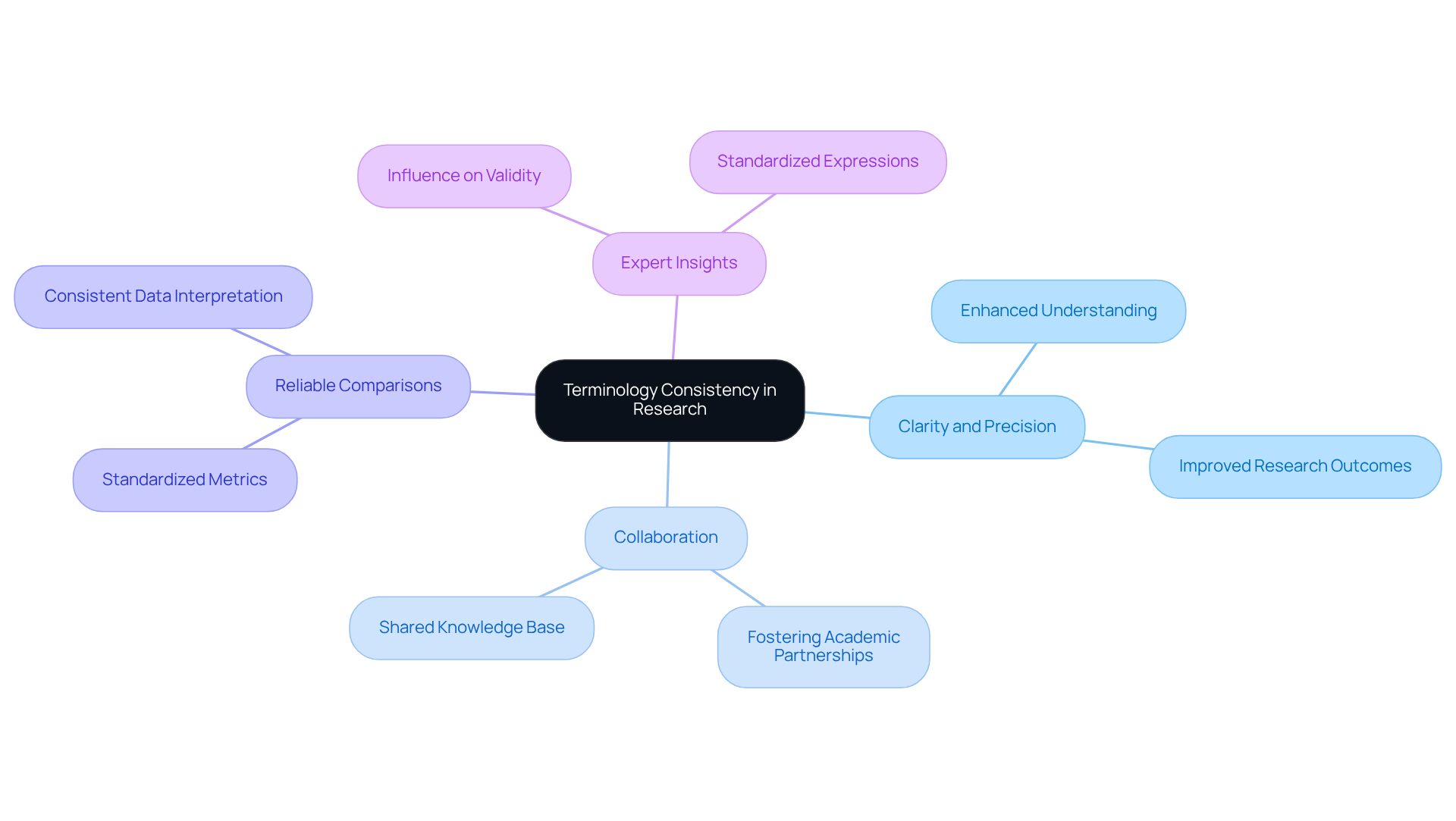
The is crucial, primarily revolving around spelling and regional preferences.
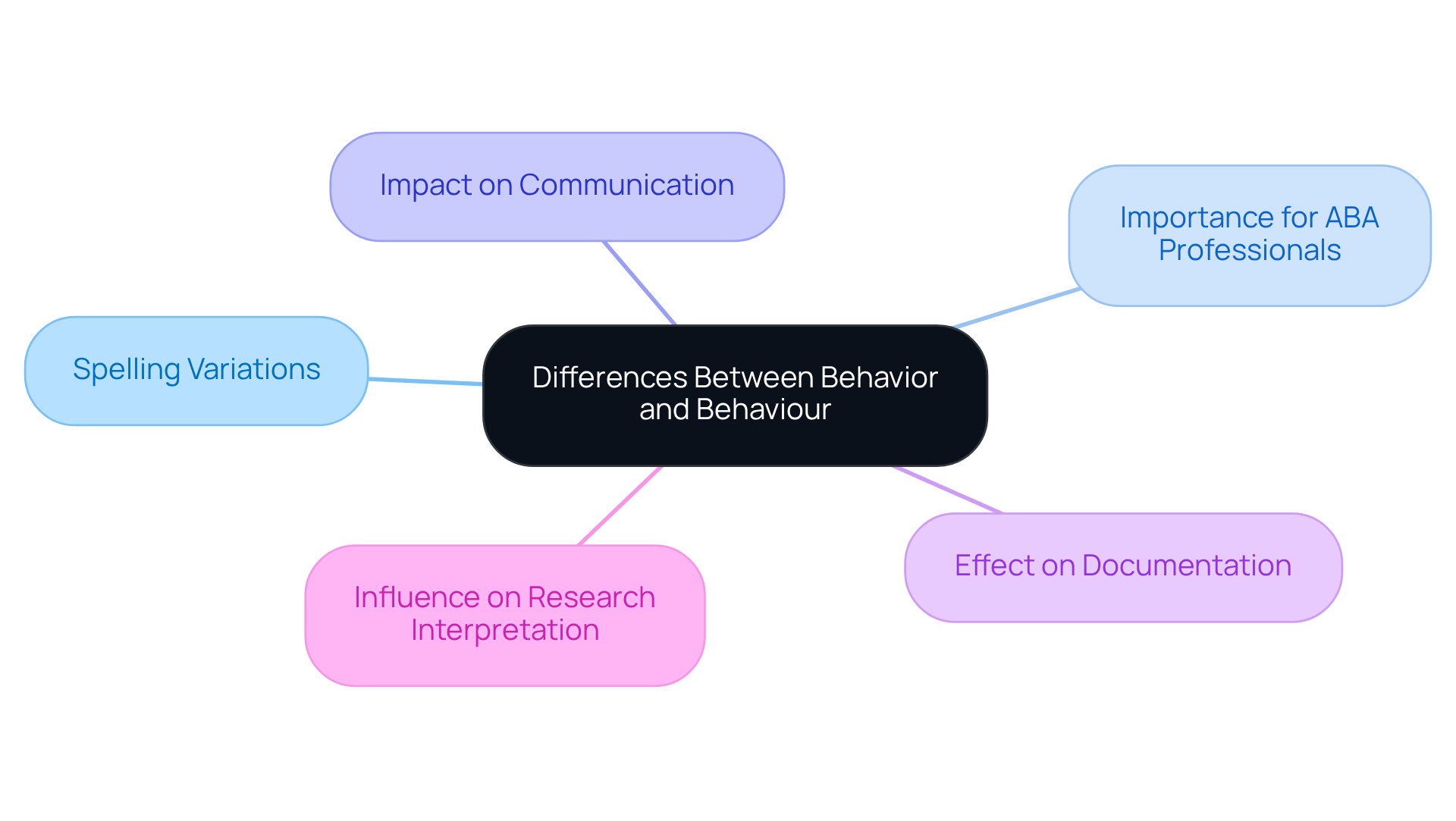
The exploration of 'behavior' versus 'behaviour' reveals more than just a spelling difference; it underscores the critical role of language in Applied Behavior Analysis (ABA) therapy. Understanding these terms is essential for practitioners, as they can significantly impact communication, documentation, and the overall effectiveness of therapeutic interventions. By recognizing the regional preferences and cultural contexts associated with these terms, professionals can enhance their interactions with clients and colleagues, ultimately leading to improved outcomes in therapy.
Key insights throughout the article emphasize the necessity of clear communication and consistent terminology in ABA practices. The implications of using 'behavior' or 'behaviour' extend beyond mere spelling; they influence treatment plans, data collection, and the interpretation of research findings. As the field evolves, the ability to navigate these linguistic nuances becomes increasingly vital for fostering collaboration among analysts and ensuring that all stakeholders are aligned in their therapeutic approaches.
In light of these insights, it is essential for practitioners in ABA therapy to prioritize linguistic awareness and clarity in their communication. By doing so, they can create more inclusive and effective therapeutic environments that cater to the diverse needs of their clients. Embracing these distinctions not only enhances professional practice but also contributes to the broader goal of delivering high-quality care in an increasingly globalized field.
What is the difference between 'behavior' and 'behaviour'?
'Behavior' is the American English spelling, while 'behaviour' is the British English spelling. Both terms denote the same idea but vary according to regional language preferences.
Why is the distinction between 'behavior' and 'behaviour' important in ABA therapy?
The distinction is essential for professionals in international environments, as inconsistencies in language can lead to misunderstandings in treatment plans and progress reports, potentially affecting the quality of care provided.
How does language impact communication in multicultural settings?
Approximately 70% of analysts encounter communication challenges in multicultural environments. Awareness of linguistic differences is crucial for fostering understanding and building rapport with clients from diverse backgrounds.
How do American and British analysts differ in their focus on behavior analysis?
American practitioners typically emphasize visible actions and measurable activities, while British analysts often consider contextual factors surrounding actions. This divergence can lead to varied intervention strategies.
What is the projected demand for Board Certified Behavior Analysts (BCBAs)?
The demand for BCBAs is projected to increase by 25% by 2026, highlighting the importance of understanding the differences between behavior and behaviour in enhancing ABA practices.
What role does family support play in behavior analysis?
Incorporating insights on family support for individuals with autism provides a broader context for understanding behavior analysis, ensuring that interventions are effective and supportive of individuals and families involved.
How can professionals adapt their methodologies in behavior analysis?
As the field evolves, practitioners are encouraged to recognize distinctions between behavior and behaviour, adapting their methodologies to better suit the needs of those receiving therapy.
Our expert recruitment strategies and AI-driven sourcing ensure that you receive top-notch candidates quickly, without compromising on quality. Whether you’re looking for BCBAs, Clinical Directors, or RBTs, we’ve got you covered.